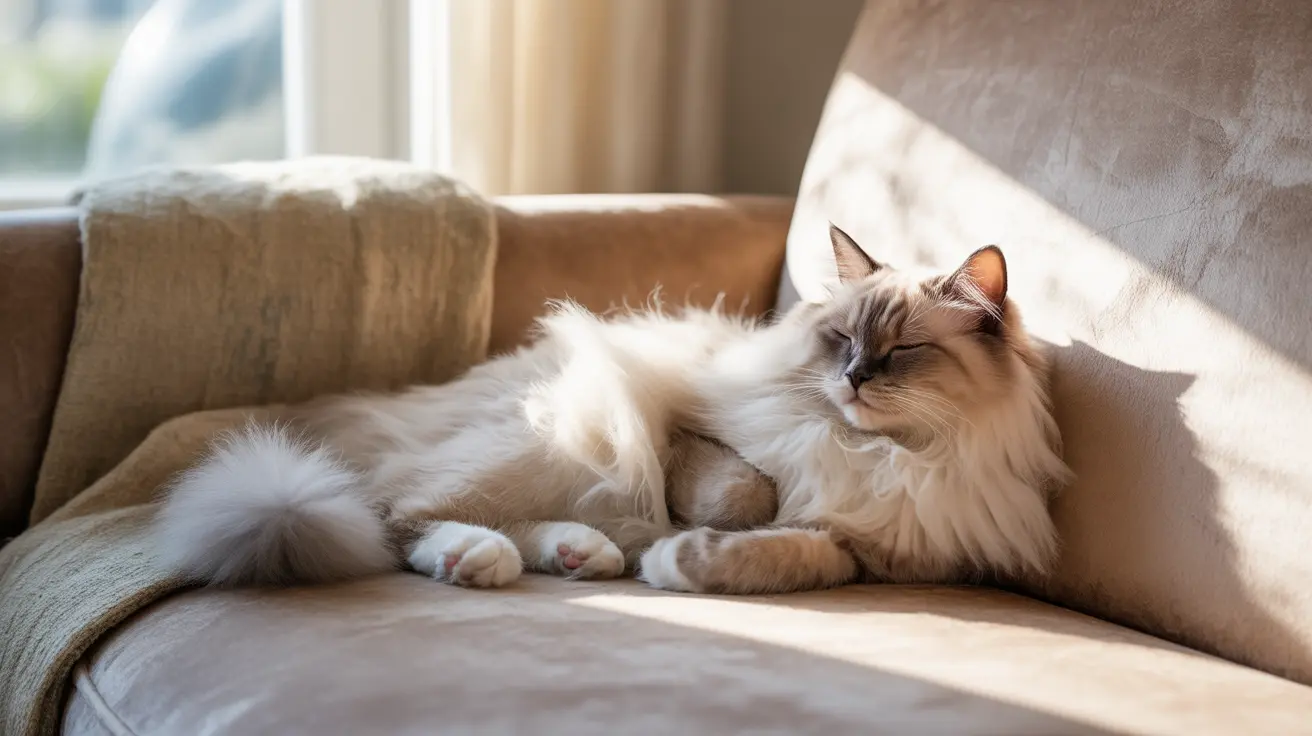When it comes to understanding our feline companions, their sleep habits and positions can tell us volumes about their physical and emotional well-being. Cats spend an impressive 12-16 hours sleeping each day, making their rest patterns a significant part of their daily routine and overall health.
These sleep behaviors aren't merely about rest—they're complex expressions of instinct, comfort, and social bonds. From the way they curl up in tight balls to their preference for sleeping near their human companions, each position and habit carries deeper meaning about their state of mind and level of contentment.
Whether you're a new cat owner or a longtime feline enthusiast, understanding these sleep patterns can help you better care for your pet and strengthen your bond. Let's explore the fascinating world of cat sleep habits and what they reveal about our furry friends.
The Evolution of Feline Sleep Patterns
Cats' sleeping habits are deeply rooted in their evolutionary history as both predators and prey. Their cat instincts continue to influence how and where they choose to rest, even in the safety of our homes. This dual nature has resulted in unique sleep behaviors that balance the need for deep rest with maintaining awareness of their surroundings.
Natural Vigilance and Security
Even while they appear to be dozing, cats retain a strong sense of awareness. Their ears rotate toward the slightest sound, and their bodies are prepared to leap into action if needed. This vigilance is a survival adaptation, inherited from their wild ancestors who needed to stay alert to dangers while resting. As a result, many cats prefer high or hidden spots for sleep, allowing them to monitor their environment and minimize potential threats. This tendency is also why your cat might position themselves facing a doorway or choose a quiet but elevated perch.
Common Sleep Positions and Their Significance
The Curled Position
The curled position is perhaps the most recognizable feline sleeping posture. When a cat tucks itself into a tight ball, wrapping its tail around the body and often covering its nose, it is engaging in a natural behavior that serves multiple purposes. By curling up, your cat conserves body heat, an essential tactic for both warmth and energy preservation. This position also helps protect vulnerable organs, a habit ingrained by evolutionary instincts to defend themselves while in a vulnerable state.
The Belly-Up Position
Seeing your cat sprawled out with their belly exposed is a heartwarming and significant sight. This belly-up position communicates a high level of trust and comfort. The feline belly is the most sensitive and least protected area, so when your cat sleeps this way, they're signaling that they feel completely safe and relaxed in their environment. It's important to respect your cat's boundaries, though—while the position shows trust, not all cats appreciate belly rubs even when lying this way.
Social Aspects of Cat Sleep
Although cats are often stereotyped as solitary creatures, many develop strong social bonds that affect their sleep behavior. Social cats may choose to sleep alongside other cats, favored pets, or even humans. These communal sleep habits are a sign of trust and affection and often reflect the positive relationships they've nurtured within their home environment. Social sleeping also provides warmth and a sense of security, echoing behaviors observed in feline colonies in the wild.
Sleeping with Humans
The special bond between cats and their humans is frequently displayed through sleep. If your cat chooses to nap near you, on your lap, or beside you in bed, take it as a compliment! This close proximity indicates not only comfort but also deep-rooted affection and trust. Sleeping together strengthens the emotional connection and can be soothing for both cat and owner—mutually enhancing the sense of security and companionship.
Understanding Your Cat's Sleep for Better Care
Monitoring your cat's sleep patterns provides valuable insight into their health and happiness. Sudden changes—such as sleeping much more or less than usual, or favoring new positions or locations—can sometimes signal health problems. For instance, a typically social cat who begins sleeping alone or in hidden spots may be experiencing stress or illness. Observing these subtle cues can help you identify and address potential issues early, ensuring your pet receives proper care.
Creating the Perfect Sleep Environment
Supporting your cat's need for restful sleep involves providing a variety of suitable sleeping spots. Consider investing in comfortable beds, high perches, and cozy hideaways. Cats appreciate quiet, secure spaces where they can relax undisturbed. Offering choices at different heights—from window ledges to enclosed boxes—can help satisfy your pet's preference for either observation or snuggled seclusion. Ensure each sleeping area is clean, safe, and offers the right temperature and softness for optimal comfort.
Frequently Asked Questions
- How many hours do cats typically sleep each day? Cats usually sleep between 12 and 16 hours daily. Some kittens and older cats may even exceed this amount, making regular and ample rest a normal part of feline life.
- Why do cats choose different sleeping positions? Their positions reflect a combination of comfort, safety concerns, environmental factors, and their current emotional state. Changes in position can also signal shifts in health or mood.
- What does it mean when a cat sleeps belly-up? A belly-up position signals deep trust and relaxation, as the cat exposes its most sensitive area—an act it would only perform in a safe, stress-free setting.
- Why do cats often curl up when sleeping? Curling up helps them conserve warmth, minimize exposure, and feel secure against threats, reflecting both comfort and instinctual protective behavior.
- How do cats' instincts affect their sleep? Evolutionary instincts keep cats alert and responsive even during rest, ensuring they remain ready to respond to potential dangers in their environment.
- Do cats prefer sleeping alone or with others? Many cats enjoy sleeping near trusted humans or animals, though preferences vary with personality. Some are more independent, while others seek out company for comfort and warmth.
- Can a cat's sleep habits indicate its health? Yes, sudden or pronounced changes in sleep habits may be an early indicator of health issues and should not be ignored.
- Why do cats nap in high or hidden spots? Elevated or concealed areas provide a vantage point for monitoring surroundings and increase a cat's sense of safety during sleep.
- Does sleeping near you mean your cat loves you? Sleeping close to you is a strong sign of affection and a well-established social bond. It's one of the ways cats show trust.
- How can observing my cat's sleep deepen our bond? By paying attention to your cat's unique sleeping habits and preferences, you demonstrate care and understanding, fostering a closer and more supportive relationship.
By paying attention to your cat's sleep patterns and positions, you can gain valuable insight into their well-being and emotional state. This understanding allows you to create a supportive environment and strengthen your relationship with your feline companion. Every cat is unique, so learning to read your own cat’s individual sleep habits is key to providing them with the comfort and happiness they deserve.






